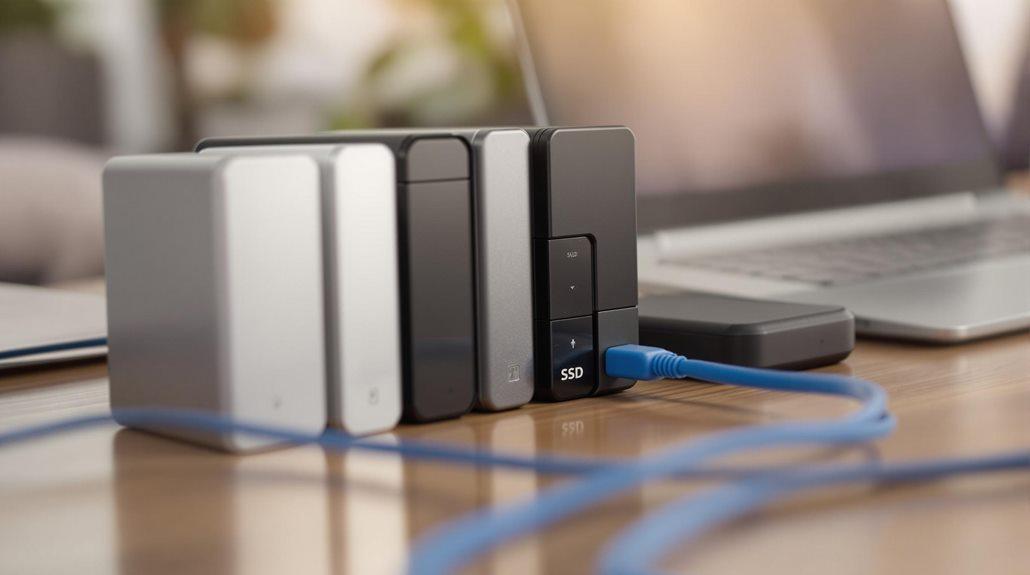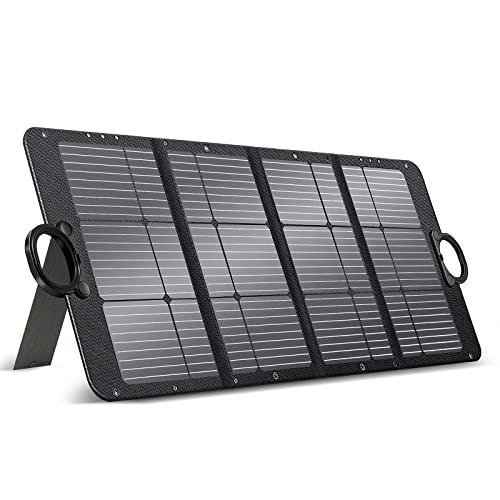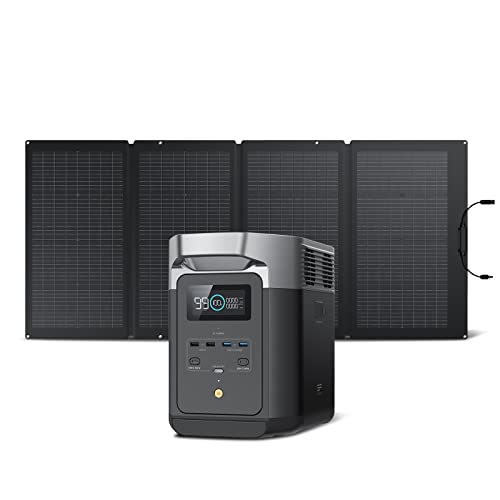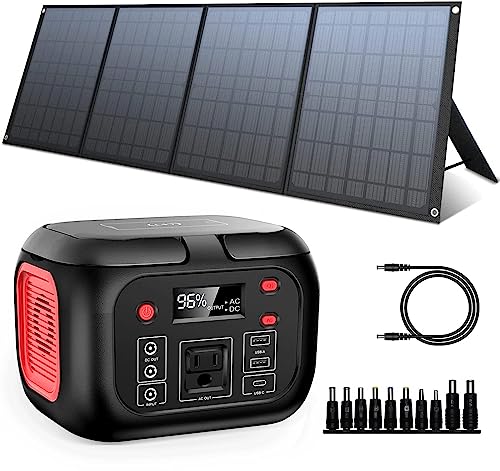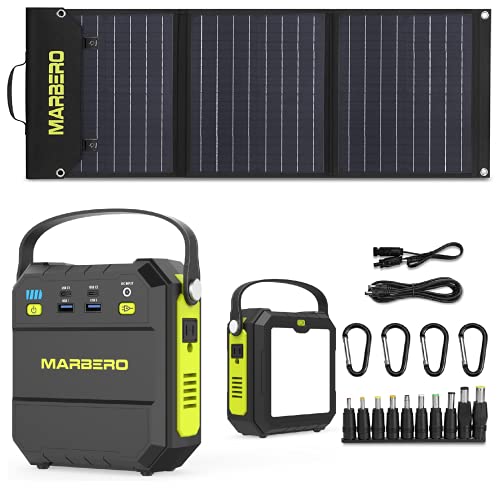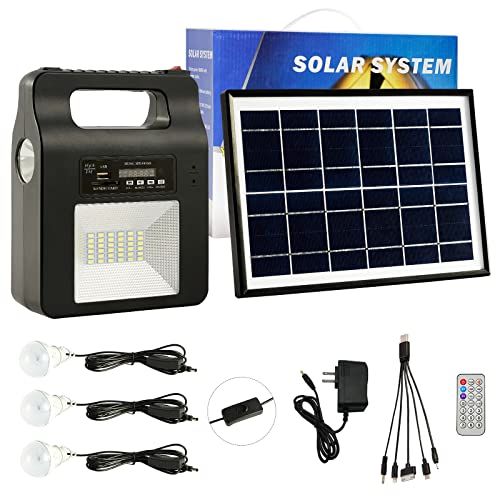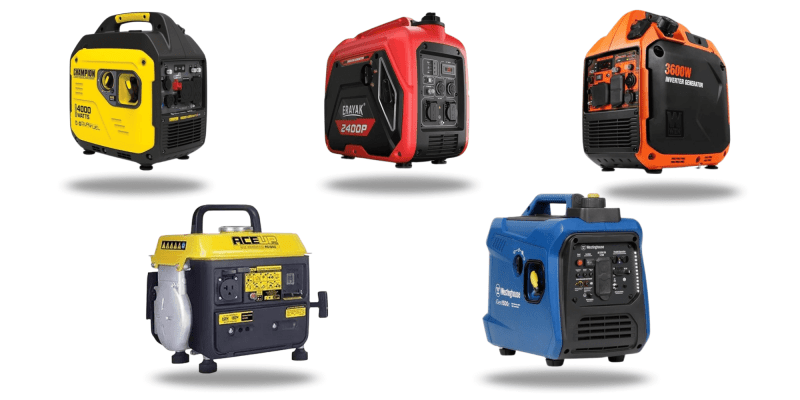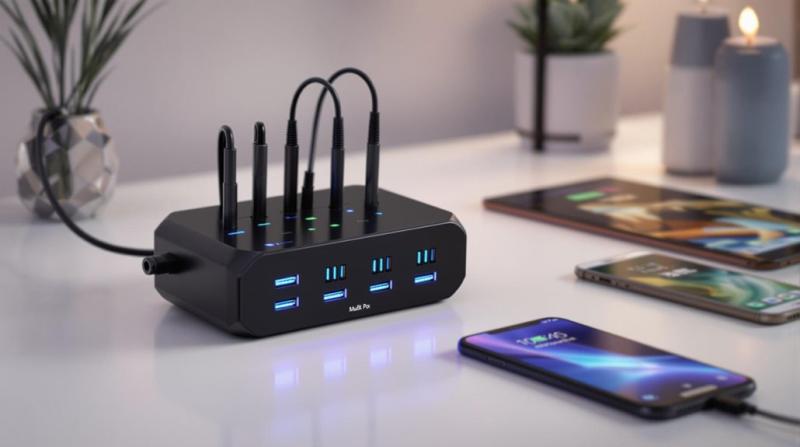Modern portable backup power systems offer you reliable emergency power solutions for your home's essential devices and appliances. These systems range from compact 600W units ideal for basic electronics to robust 6,000W systems capable of powering major appliances. You'll find features like pure sine wave technology, multiple charging ports, and lithium iron phosphate batteries that deliver 3,000-5,000 charge cycles. Most units support solar charging with 400W to 800W input capacity, making them versatile for both grid and off-grid situations. With expandable capacity options up to 26.9 kWh and smart power management features, there's much more to evaluate when selecting your ideal backup solution.
Key Takeaways
- Portable power stations range from 600W to 6,000W, providing scalable backup power solutions for various home energy needs.
- Lithium iron phosphate batteries deliver 3,000-5,000 charge cycles with 70% capacity retention after ten years of use.
- Systems offer multiple charging ports and pure sine wave technology for safely powering sensitive electronic devices.
- Professional installation of transfer switches enables automatic home circuit switching during power outages.
- Solar charging capabilities from 400W to 800W allow sustainable power generation for off-grid backup operations.
Portable Power Station Categories
When choosing a portable power station, you'll find options ranging from compact 600W units to powerful 6,000W systems. These versatile home backup solutions come in distinct categories based on your power needs and intended use. Having pure sine wave inverters guarantees cleaner and more stable power output for sensitive electronics. You'll discover budget-friendly models like the Bluetti AC70, which offers 768Wh battery capacity at around $429, making it perfect for essential circuits and basic backup power.
For midrange needs, you'll want to evaluate systems like the Jackery Explorer 1000 Plus, which delivers 2,000W power output and features expandable battery capabilities. If you're looking for more robust backup power, high-capacity units like the Anker Solix F3800 provide up to 6,000W of output for demanding applications. Most modern portable power stations support solar charging compatibility and come equipped with multiple charging ports for your devices.
When selecting your ideal power station, evaluate factors like usable capacity, which typically reaches around 93% of the stated capacity, and charging speed, with many units now offering rapid charging capabilities. Look for additional features like telescoping handles and wheels if you'll need to move your unit frequently.
Battery Technology Fundamentals
Understanding battery technology fundamentals is essential for selecting the right portable backup system. When you're choosing a home battery backup solution, you'll want to focus on the advanced lithium iron phosphate technology that's revolutionizing energy storage. With their lightweight design advantages and higher energy density compared to lead-acid alternatives, these modern batteries deliver superior portability while maintaining peak performance. These batteries offer 3,000-5,000 charge cycles and superior safety features, making them ideal for managing power outages.
Your battery capacity needs will determine the size of your system, with options ranging from 1.5 kWh to 20 kWh. Today's systems come equipped with smart control features through battery management systems (BMS) that monitor pivotal factors like temperature and voltage, ensuring your investment stays protected. You'll find that many systems can integrate with solar panels for sustainable charging, while offering remote monitoring capabilities.
When considering long-term performance, it's important to understand that battery capacity naturally degrades over time. However, quality home backup systems maintain about 70% of their original capacity after a decade of use. This predictable degradation rate helps you plan for your future power needs while ensuring reliable performance during critical moments.
$194.64
4.62 out of 5 stars100W Solar Panel for Portable Power Station
Efficiently Charge Your Portable Power Station with a 100W Solar Panel for Eco-Friendly Power on the Go"
Product information
Product Review Score
Product links
Power Output Capabilities
Building on the foundation of battery technology, power output capabilities determine what you can actually run during an outage. Today's portable battery backup systems deliver impressive power ranges from 600 to 7,200 watts, giving you flexible options for maintaining essential home operations during emergencies. Battery capacity calculations help determine exact runtime, with a 500Wh unit powering a 50W device for approximately 10 hours.
When you're selecting a system for whole-home backup power, you'll need to contemplate both continuous and surge output ratings. High-end models like the Anker Solix F3800 can provide up to 6,000W of continuous power, while systems like the EcoFlow DELTA Pro offer surge capabilities up to 7,200W for demanding appliances that need extra startup power. You'll find that midrange options, such as the Jackery Explorer 1000 Plus, deliver 2,000W of steady power output, which can handle multiple smaller appliances simultaneously.
Modern systems now incorporate smart power management features that work with your home circuits through a transfer switch, letting you direct power where it's needed most. With expandable energy capacity options reaching up to 26.9kWh, you can customize your backup solution to match your specific power requirements and guarantee reliable coverage during extended outages.
Home Integration Methods
Safe integration of portable backup systems into your home's electrical infrastructure requires professional installation and specialized equipment. A transfer switch installation is mandatory to guarantee your portable generators can safely power your home circuits without risking backfeeding into utility lines. Proper battery maintenance practices like regular cleaning and avoiding deep discharges will maximize your backup system's lifespan and reliability.
Modern backup power solutions like the EcoFlow Smart Home Panel take integration capabilities to the next level. You'll get automatic switching for up to 10 circuits during outages, with an impressive 20-millisecond response time that helps maintain continuous Power Supply to critical home appliances. The system's relay modules enable precise control over different current loads, letting you manage your home energy distribution effectively.
When selecting a backup system, consider expandable options that can grow with your needs. For instance, the EcoFlow DELTA Pro's modular design lets you scale from 3.6 to 25 kWh capacity, providing flexible coverage for various home circuits. You can monitor and control your backup power through mobile apps, which give you real-time insights into energy usage and distribution. This remote capability ensures you'll always know the status of your backup system, even when you're away from home.
$699.00
4.13 out of 5 starsEF ECOFLOW Solar Generator with 220W Panel
Efficient and Reliable Solar Power Station for All Your Charging Needs
Product information
Product Review Score
Product links
Solar Charging Solutions
Modern portable backup systems shine brightest when paired with solar charging solutions, offering input capacities between 400W to 800W for efficient battery replenishment. You'll find versatile options like the Boulder 200 Briefcase and Nomad 400 PRO that connect directly to your backup power station, guaranteeing reliable energy generation during off-grid situations or emergencies. Top rated generators like the EcoFlow Delta Pro and Bluetti AC200P provide exceptional compatibility with these solar charging options.
Today's home backup systems support substantial solar integration, with capabilities ranging from 5.6 to 16.8kW solar input. This impressive capacity means you can potentially charge a full day's power supply in just one hour of direct sunlight. You'll appreciate the modular design of advanced solar charging solutions, which lets you expand your setup from two to four panels as your energy needs grow.
The technology behind these solar charging systems includes sophisticated features that maximize your charging efficiency. With automatic voltage regulation and maximum power point tracking (MPPT), your system intelligently adapts to different battery types and varying sunlight conditions. These innovations ensure you're getting the most from your solar investment, while the compatibility with multiple battery chemistries provides flexibility in choosing the right power storage solution for your needs.
Runtime and Performance Metrics
While solar charging capabilities determine how quickly you can replenish your backup power, understanding runtime and performance metrics helps you select the right system size for your needs. Most home backup solutions provide between 1-5 days of continuous power, though this varies substantially based on your power consumption patterns and the specific electrical circuits you're protecting.
When evaluating capacity, you'll find systems ranging from 1,500Wh to 20,000Wh, which directly affects how long you can run essential appliances during an outage. Your home's power requirements typically fall between 3,600W and 7,200W for critical circuits, so you'll need to match your backup power solution accordingly. Modern batteries, particularly those using LiFePO4 technology, offer expandable options that let you increase run time by connecting multiple units together, scaling from 4 kWh up to 20 kWh of backup power.
Remember that actual performance depends heavily on which appliances you're powering. High-draw items like refrigerators and HVAC systems will substantially reduce your system's runtime, so you'll need to carefully calculate your essential power needs when selecting a system capacity.
Safety Features and Protection
High-quality backup power systems incorporate multiple layers of protection to safeguard your home and family. Modern units like the EcoFlow DELTA Pro utilize advanced Lithium iron phosphate (LiFePO4) technology, which markedly reduces fire risk compared to conventional lithium batteries. You'll find all-encompassing Battery Management Systems built into these devices, constantly monitoring and protecting against common hazards like overcharging and short circuits.
Your safety is further enhanced through multiple thermal protection mechanisms that maintain stable operating temperatures across various conditions. When you're setting up your backup system, you'll benefit from professional installation requirements that include proper grounding and transfer switch integration. These measures create a robust safety framework for your home power solution.
The system's Automatic Fire Circuit Interrupt boxes provide an additional layer of protection, automatically cutting power if electrical anomalies are detected. You'll appreciate how these sophisticated safety features work together seamlessly in the background, letting you focus on using your backup power system without worry. The combination of protective elements confirm reliable operation while minimizing potential risks to your property and family.
Installation and Setup Requirements
Building on the safety framework, proper installation of your home backup system demands professional expertise and careful planning. You'll need a licensed electrician to guarantee your system meets all safety requirements and integrates correctly with your home's electrical infrastructure. The installation process involves detailed assessment of your power consumption patterns and identifying up to 10 critical circuits that you'll want to keep running during outages.
A transfer switch, costing between $500-$2,000, is an essential component that you'll need to smoothly shift between grid power and your backup system. Your electrician will verify grid compatibility and install appropriate relay modules that match your home's energy demands. When it comes to the battery system placement, you'll want to contemplate proper ventilation and environmental protection, whether it's wall-mounted or floor-installed. The process requires precise electrical mapping and strategic circuit designation to guarantee your home backup system functions effectively. Remember, while the installation might seem complex, it's pivotal to follow professional installation guidelines to maintain safety and ideal performance of your backup power solution.
System Maintenance and Care
For peak performance and longevity, your home backup system requires consistent maintenance and attentive care. Regular maintenance of your battery power system guarantees reliable operation when you need it most, while protecting your investment in this essential equipment.
Start by monitoring your backup system's battery capacity rating, keeping the charge level between 20-80% during non-use periods. You'll want to clean the battery terminals and generator cord connections regularly to prevent corrosion that could impair power transfer. Store your system in a temperature-controlled space between 50-77°F, as extreme temperatures can drastically impact battery performance and lifespan.
Schedule annual professional inspections to verify that all electrical components are working correctly and properly calibrated. During these checks, technicians will assess your battery's health and confirm peak system functionality. Don't forget to update your system's firmware and software quarterly if you're using smart home backup technology. These updates improve efficiency and maintain compatibility with new features, while guaranteeing your system operates at peak performance levels when you need backup power most.
Frequently Asked Questions
How to Power Your Home Through an Outage Without a Gas Generator?
You can keep your home powered during outages by installing an all-encompassing battery wall system with energy storage capabilities. Connect your solar panel roof or wind turbine to a home inverter, which converts the stored power for your appliances. Power banks and battery systems serve as a reliable grid alternative, providing seamless backup when the electricity fails. Modern battery solutions offer clean, emission-free power that's both efficient and environmentally responsible.
Can a Portable Power Station Be Used as a UPS?
Want reliable portable protection for your electronics? Yes, you can use a portable power station as a UPS! Modern units offer battery backup with quick switch times of 10-20 milliseconds, functioning as both a surge defender and voltage stabilizer. They'll keep your critical circuits powered during emergencies, and with LiFePO4 technology, you'll get better performance than traditional UPS systems. For ideal emergency power setup, you'll need professional installation with a transfer switch.
Is a Power Pack Better Than a Generator?
Your choice between a power pack and generator depends on your specific needs. If you're looking for a portable choice with quiet operation and energy efficiency, a power pack's often better. While generators offer higher power capacity, power packs excel in charging speed, compact design, and maintenance-free operation. You'll find power packs particularly advantageous for emergency readiness due to their instant activation, though you'll need to evaluate battery weight limitations.
How Long Will Battery Backup Last?
Your battery backup's duration depends on several runtime factors, including your power capacity and energy consumption patterns. You'll typically get 1-5 days of backup with a standard system, though this varies based on which appliances you're powering. To maximize backup efficiency, consider your storage limitations and prioritize essential devices. Remember, charge cycles and usage patterns will affect how long your battery system can maintain power during an outage.
